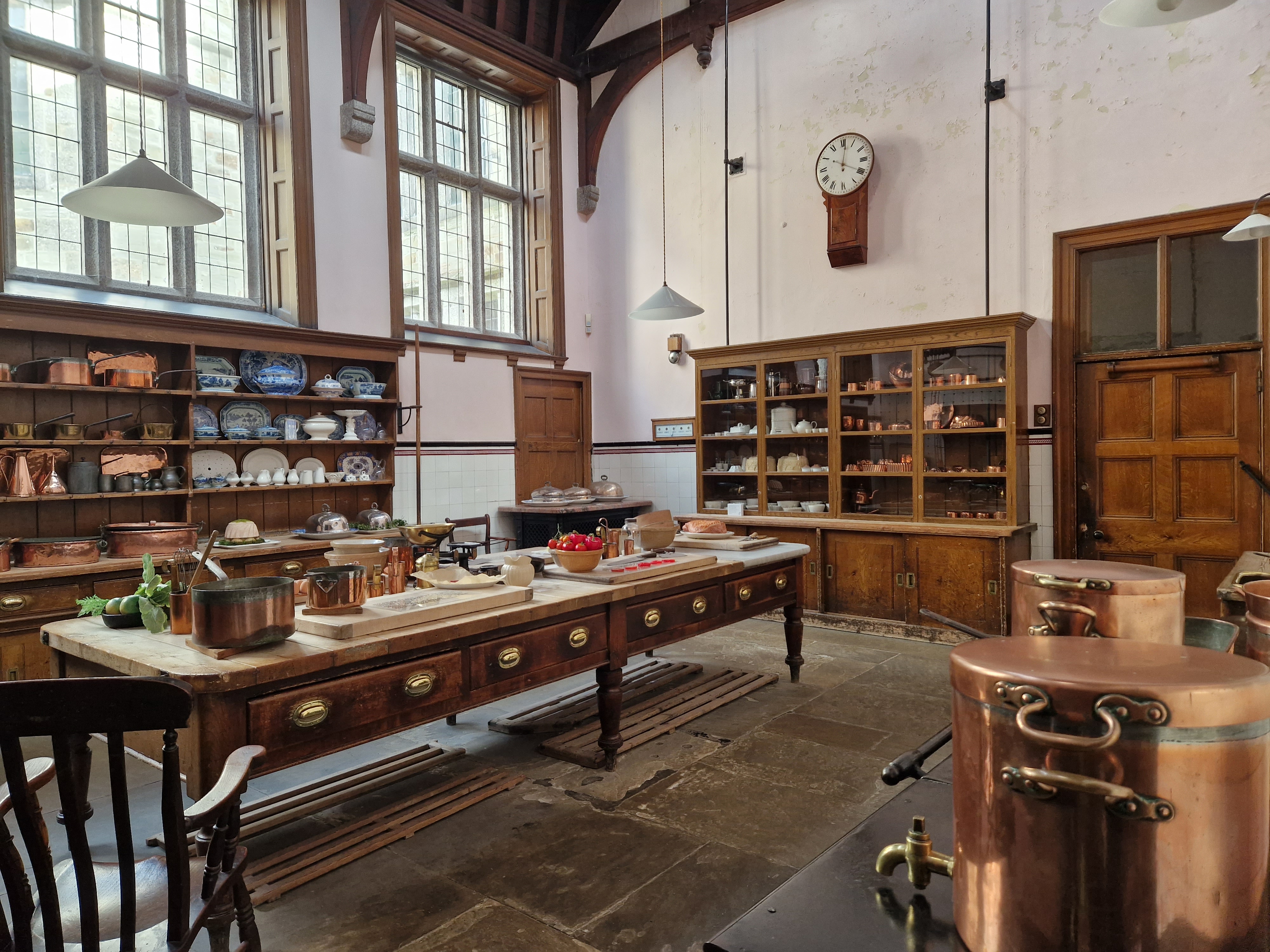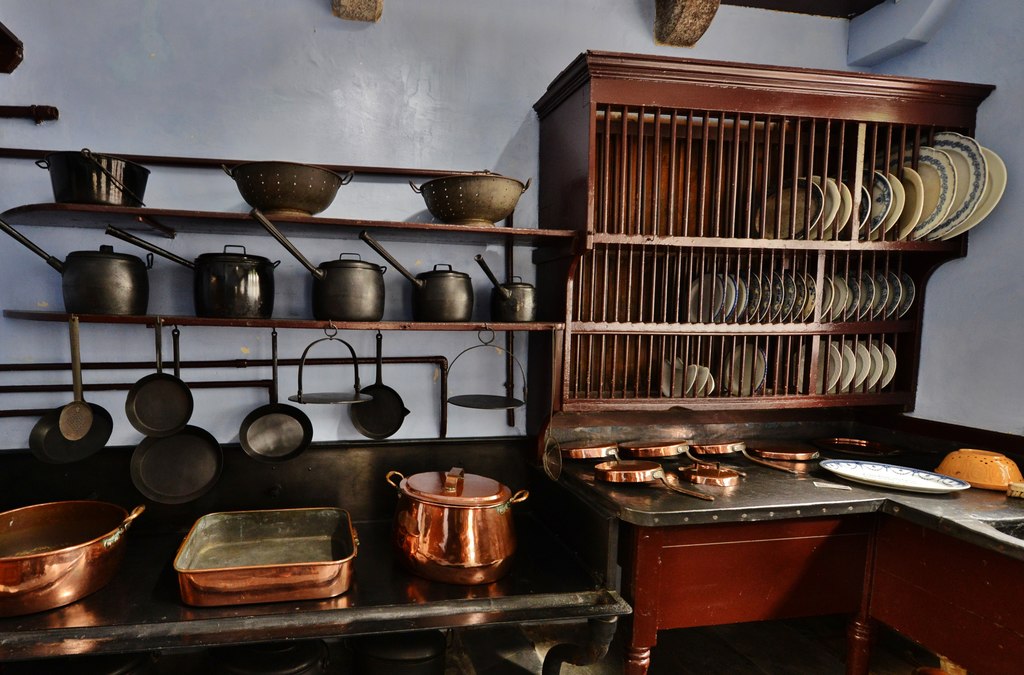
This Victorian country house kitchen is a perfect synthesis of craftsmanship, technology, ergonomic design and simple beauty. We cast an expert eye over Lanhydrock House…
The space itself is jaw-dropping, with high wooden roof beams and natural light flooding in through the deep clerestory windows. Everything is on a grand scale, from the enormous cast-iron coal-fired ranges, to vast dressers and cupboards (including purpose-built warming cupboards), to a roasting spit that looks like it’s been designed for cooking mammoths.

But it’s also a beautiful, practical kitchen. The natural materials, exposed stone floors and handcrafted wooden cabinets have a completely timeless appeal.
It is a classic English ‘country house’ kitchen – a style that still inspires designers everywhere. But if it hadn't been for a devastating chimney fire in 1881, that look might never have taken hold. The fire happened at Lanhydrock House, the Cornish stately home of the Agar-Robartes family. It destroyed two wings of the seventeenth-century building, which were then rebuilt from scratch. The owner’s instruction to the architect, Richard Coad, was to build a state-of-the art kitchen with all the latest equipment, appliances and devices.
It would become the country house kitchen par excellence.

However, when we say “kitchen”, what we actually mean here is an entire suite of specialist rooms.
These include: a tiled dairy with purpose-built heated pans for making Cornish clotted cream; a meat and game larder; a scullery for washing dishes; a dessert room with a marble worktop (naturally cool for pastry preparation); a pantry with a haybox cooker and zinc-lined sinks; a cold room with ice boxes regularly refilled with ice delivered 50 miles from Plymouth; and a bakehouse with a brick oven that took four days to heat up.


Kitchen dresser. (Photo: © Michael Garlick and licensed for reuse under this Creative Commons Licence.)
This kitchen had to work hard. The 80 or so staff in Lanhydrock’s heyday, including cooks and various kinds of maid (dairy, kitchen, scullery) had to cope with all the lavishness of late 19th century country house entertaining… Think weekend shooting parties and hunt balls, three complicated main meals a day, plus afternoon tea and late-night suppers.
But the kitchen isn’t just big, it’s brilliantly designed. It has an ergonomic layout that predates by decades the invention of the kitchen triangle.
The dresser cupboards have open shelving for items in frequent use, and glass-fronted doors to protect precious china and glassware. The wooden kitchen table that dominates the centre of the room acts as a main workspace, with drawers, and as a dining table for servants. Wide walkways allow multiple staff to scurry around each other, and ventilation can be controlled by an intricate system of rods and gears attached to the windows. There are cutting-edge Victorian kitchen gadgets galore, high-level plate racks and the gorgeous copper batterie de cuisine is still in place.
Lanhydrock House is now one the National Trust’s most popular properties, with hundreds of thousands of visitors every year marvelling at perhaps the quintessential country house kitchen, and going home inspired…

Country house inspiration
Here are some of the Lanhydrock features we particularly love at Naked Kitchens…
Natural materials
Exposed timber, stone floors…. and the metals are beautiful too, including the brass drawer handles and copper pans. Timeless.
Bespoke storage built to last
Plate racks, beautiful timber shelves, glass-fronted cupboards… you don’t need a stately home to borrow these country house features. Naked Kitchens make bespoke storage, including pantries and larders, to fit any size kitchen – built for life and tailored to the way you live and cook.
That beautiful blue
The walls of some of the rooms were painted in a bright blue because this was thought to deter flies. But it’s just a stunning colour for a kitchen (not a million miles away from our Point Blue or Beach Hut colours in fact.)

Find out more about visiting Lanhydrock on the National Trust site.
Image top courtesy of Tanith and Ben of What to Do at the Weekend. Read about their visit to Lanhydrock here.























